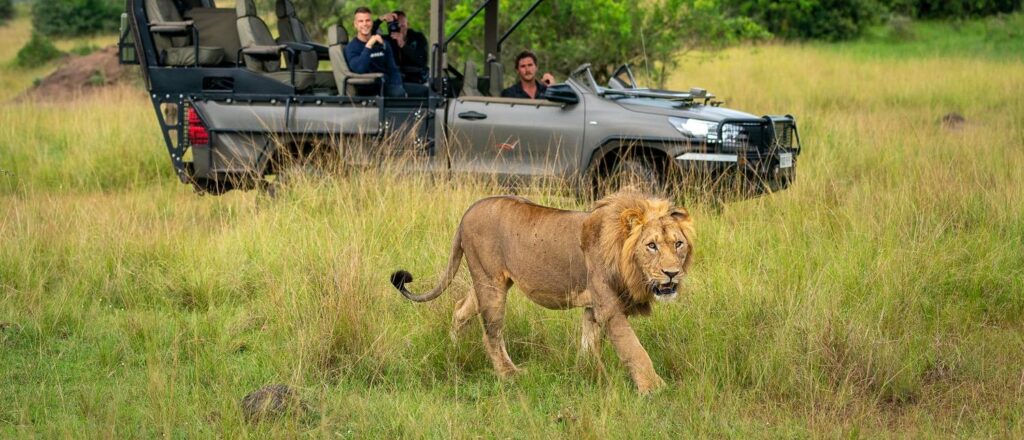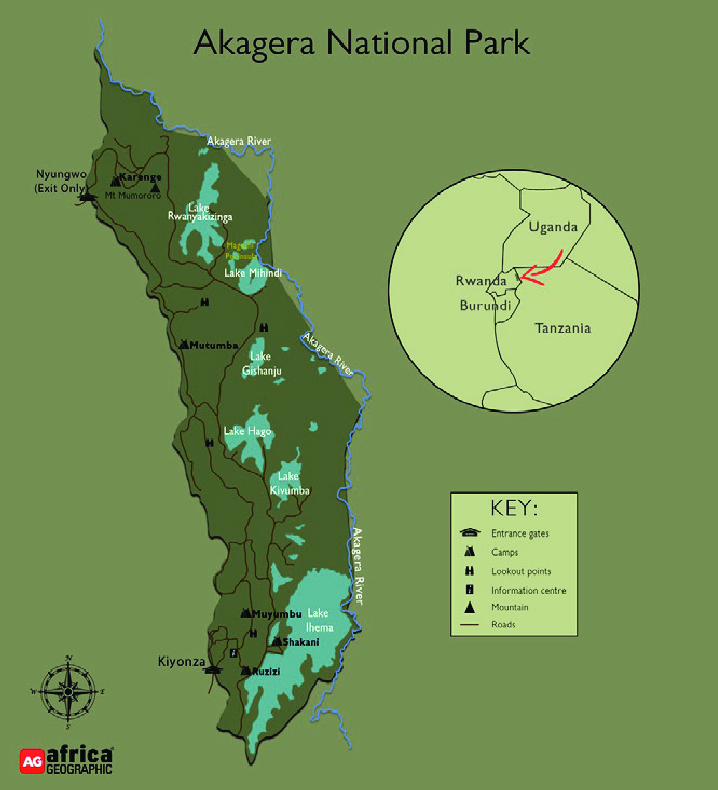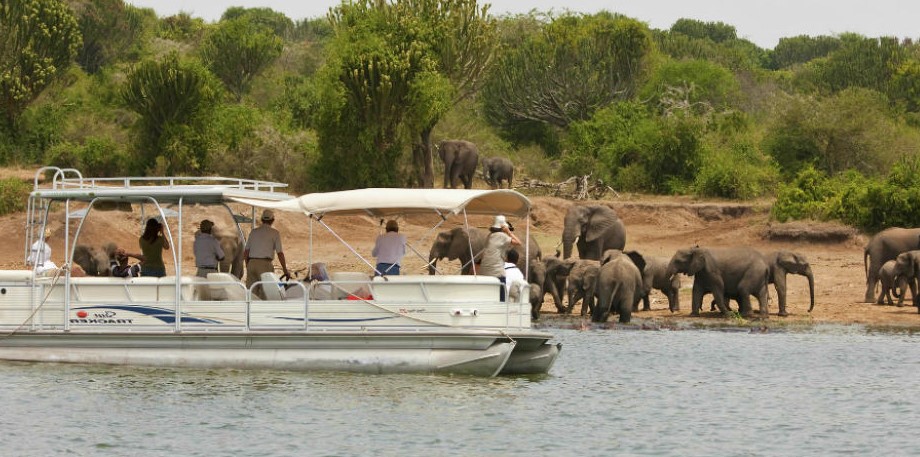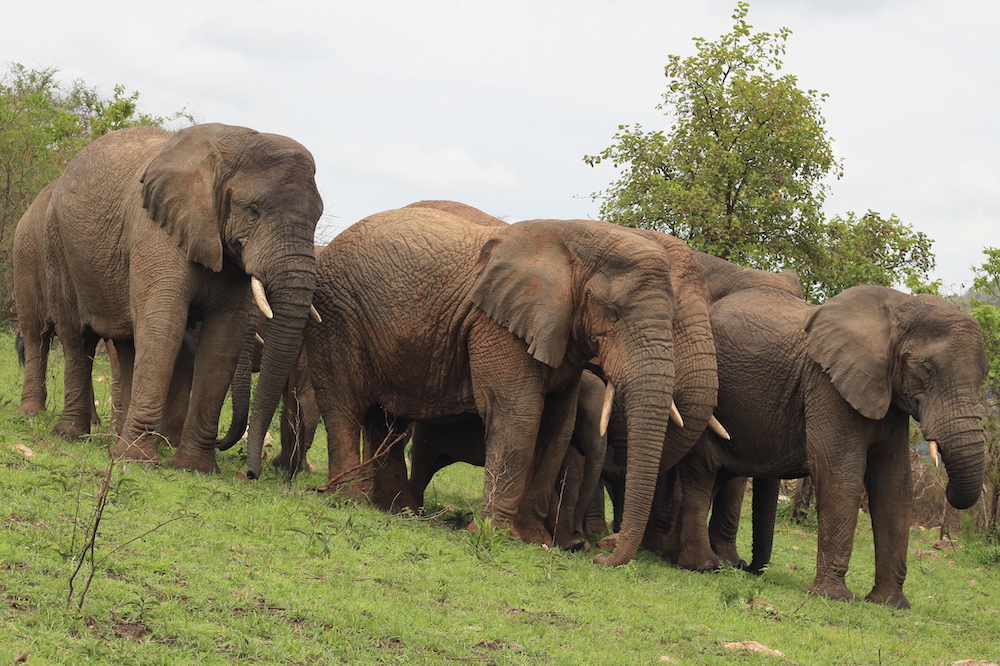Akagera National Park
Akagera National Park: One of Rwanda‘s largest national parks, Akagera National Park offers the best wildlife safari experiences available to visitors. The park, which lies in Rwanda‘s eastern region, is home to incredible wildlife species, including hippos, zebras, lions, and giraffes. It is possible to engage in animal activities like boat cruises because this national park is home to the beautiful Lake Ihema. In addition to these popular pursuits, Akagera National Park offers community excursions, animal game drives, and bird viewing.

Akagera National Park’s past.
Before Akagera was designated as a national park, it was a forest reserve with a wide variety of plant and animal species. The Belgian government designated Akagera as a national park later in 1934. This was carried out in an attempt to safeguard the endangered natural animal species that remained within the national park.
One of the largest and oldest national parks in Rwanda is Akagera National Park, located on the African continent. The national park used to be 2,500 square kilometers in size.
Numerous wild animals, including elephants, lions, buffaloes, rhinoceroses, leopards, lycanos, antelopes, hippos, topi, and many others, were housed in the national park. The national park was dubbed the “Park of Lycanos” because of the abundance of wild dogs, or Lycanos. Nevertheless, an epidemic that swept across the national park killed a great deal of these wild canines; the last known sighting of the species was in 1984.
Most Rwandan refugees fled their country following the genocide in 1994 and settled in Akagera National Park. Consequently, the majority of the park’s woods were cut down to make way for agriculture and livestock grazing. As a substitute source of food for the vast multitudes, many animals in the park were hunted down and killed.
More than 25% of Akagera National Park was destroyed as a result of ongoing deforestation and poaching of the park’s fauna. Certain wildlife species, such lions and rhinoceroses, went extinct in the park. It was stated that the park’s final rhinoceros was sighted in 2007, while the park’s last sighting of lions occurred around the same time. At one point, Akagera National Park was home to more than 50 black rhinos and 300 lions.
In order to maintain Akagera National Park, the Rwanda Development Board and an NGO named African Parks signed a cooperative management agreement in 2009. Subsequently in 2010, the Akagera Management Company was established to supervise the efficient operation of the national park.
One of Akagera Management Company’s (AMC) accomplishments in 2015 was bringing seven lions into the park. The lions were relocated to Rwanda‘s Akagera National Park from South Africa. Following a 15-year hiatus, the lions were once again introduced into Akagera National Park.
After a ten-year hiatus, rhinos were reintroduced to Akagera National Park in May 2017 when the park acquired eighteen black eastern rhinoceroses from South Africa. A few years later, a calf was born, increasing the rhino population in the park.
Five more black rhinos were moved to Akagera National Park in Rwanda in June 2019 from a zoo in the Czech Republic. With a distance of 2,485 miles, this was the longest rhino translocation from Europe to Africa. As a result of this campaign, there are now more rhinos in the national park, increasing the likelihood that visitors may spot rhinos while on a game drive.
Additional enhancements to the national park include the addition of a canine unit to prevent poaching, the purchase of a helicopter to provide aerial monitoring, and the hiring of extra park rangers to bolster security.
Additionally, the park has experienced a rise in visitors, with 44,000 visits from tourists in 2018 alone. Akagera National Park is 75% self-financed thanks to the approximately USD 2 million in tourism money it received in the same year.
Akagera National Park Map
A map showing the attractions located within Akagera National Park.

When traveling to Akagera National Park, visitors may be sure that the park offers a variety of fascinating sights to see, such as
Wildlife: Approximately 8,000 large animals have been recorded as living in Akagera National Park. These animals include the Bruchell’s Zebra, African Bush Elephant, Black Eastern Rhinos, Lions, Leopards, Rothschild Giraffes, Hippopotami, Antelopes, Waterbucks, Impala, and many more.
Primates: Among the animals that visitors to the national park may encounter are vervet monkeys, olive baboons, silver monkeys, blue monkeys, and black and white colobus monkeys.
Bird kinds: With over 500 different kinds of birds living there, Akagera National Park is a birdwatcher’s paradise. The uncommon Shoebill stork, the great sniper bird, raptors, and the Suaza Shrike are just a few of the birds that visitors can view in the park.
Lakes: Visitors to Akagera National Park are welcome to explore any of the park’s ten lakes. Lake Ihema and Lake Shakani are two of the park’s most popular destinations.
Activities available to visitors to Rwanda‘s Akagera National Park include game drives, boat cruises, nature walks with guides, camping, hiking, fishing, and bird watching, to name a few.
Game drives in the national park of Akagera.
The best way for visitors to experience this stunning, diverse, and expansive national park is through game drives in Akagera National Park. Both day and night game drives are available to visitors to the national park; morning game drives begin at 6 a.m., and evening game drives start at 6 p.m.
During a game drive, guests may encounter a wide variety of wildlife creatures, including Sitatunga, jackals, hyenas, elephants, giraffes, antelope, kobs, impala, and many more. In Akagera National Park, nighttime game drives provide visitors a greater opportunity to encounter nocturnal creatures such serval cats, jackals, leopards, lions, and civets.
In Rwanda, wildlife drives in Akagera National Park take one to three hours and cost $30 for daytime drives and $40 for nighttime drives per participant. It is recommended that you go on a game drive with a park guide in tow, since this will facilitate your search for the particular wildlife species you wish to observe in the park.

Boat Rides in National Park Akagera.
Visitors can explore the stunning crystal lakes inside Akagera National Park by going on launch expeditions, or more accurately, boat rides or cruises. The majority of Akagera boat trips take place on Lake Ihema, where you may observe a lot of crocodiles and hippos. The park offers boat tours four times a day, at precisely 7:30 a.m., 9 a.m., 3 p.m., and 4:30 p.m. For those who would prefer to enjoy private tours, the park also offers ad hoc boat excursions.
Observing Birds at Akagera National Park.
During a birding excursion in Akagera National Park, visitors may spot a variety of birds, including the highly sought-after Shoebill Stork, marabou stork, white egrets, yellow sunbirds, grey-crowned crested cranes, and herons, among the more than 500 bird species that call the park home. The cost of a birdwatching trip in Akagera National Park is $30 per person.
Fishing in the National Park of Akagera.
Lake Shakani is the fishing location in Akagera National Park. Common fish species found there include catfish and tilapia. On this lake, the park also hosts fishing competitions. However, anyone who would like to participate in these fishing events must speak with the park’s reservations team directly.
Hiking and nature walks with a guide.
Hiking excursions and guided nature walks are available for visitors to Akagera National Park. The park’s hiking trails and nature walks offer visitors the chance to see a wide range of plant, tree, insect, butterfly, and bird species.
Tours for the community in Akagera National Park.
Visitors to Akagera National Park have the chance to interact with locals in the nearby areas by taking part in community excursions. Visitors are introduced to Rwandan culture through dance performances, traditional arts and crafts, and folk songs and stories during the community excursions. In addition, guests get to see local farms and see how to manufacture ghee and milk cows. Taking a community tour will also teach visitors how to prepare traditional Rwandan meals, brew local banana beer, and gather honey from bee farms.
A “walk the line” hiking excursion, camping, and behind-the-scenes tours are among the other activities available to tourists visiting Akagera.
Species Found in the National Park Akagera.
The Republic of Rwanda‘s only refuge for savannah wildlife is Akagera National Park. Around 8,000 large animals have been reported in the national park, including over 100 African bush elephants, over 80 Rothschild giraffes, over 15 lions, and roughly 25 black eastern rhinos. Roan antelopes, bushbucks, bohor reedbucks, oribis, Klipspringer, cape eland, bush babies, impalas, topi, hartebeests, zebras, hyenas, warthogs, buffaloes, crocodiles, duikers, and many more wildlife species coexist with the national park.

Along with over 500 different species of birds, the park is home to the rare Shoebill Stork, Papyrus Gonolek, African Darter, Grey Crowned Crane, Senegal Lapwings, Squacco Herons, Giant Kingfisher, Long-toed and Water Thick Knee birds, and Fan-tailed Widow bird.
